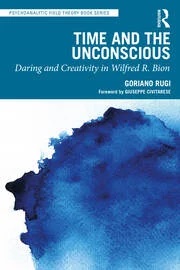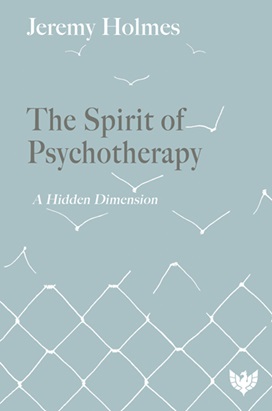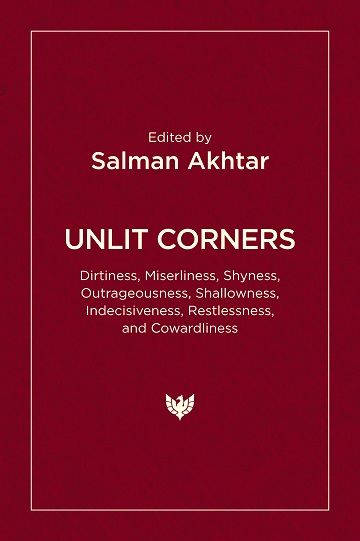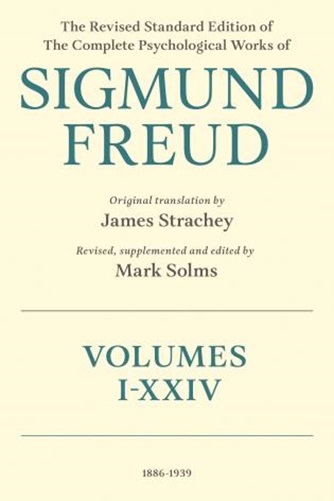Time and the Unconscious: Daring and Creativity in Wilfred R. Bion
Part of Psychoanalytic Field Theory series - more in this series

Book Details
- Publisher : Routledge
- Published : August 2024
- Cover : Paperback
- Pages : 208
- Category :
Forthcoming - Category 2 :
Psychoanalysis - Catalogue No : 97806
- ISBN 13 : 9781032658346
- ISBN 10 : 1032658347
There are currently no reviews
Be the first to review
Bion’s unfashionable thought is a challenge for our times in which anaesthesia and mass thinking prevail. The themes this book addresses are time and the unconscious.
In the present/past, the here and now reveals its relationship with the unredeemable time, which conditions our behaviour and is at the root of a state of hallucinosis in the form of a short-sighted view that is distorted by deep-seated wounds. This book also highlights the resonances with contemporary epistemology and physics that underlie the new paradigm of psychoanalytic field theory. The topic of the unconscious raises questions about its origin and the difference between the Bionian and the Freudian unconscious. In Bion we see an evolutionary, process character emerge, with a double movement of repetition and expansion within a single system in unstable equilibrium, for which there is no conscious feeling that does not also carry with it the shadow of the unconscious.
Drawing on psychoanalytic and philosophical concepts this book is essential reading for psychoanalysts, psychotherapists, philosophers and anyone who wishes to understand more fully what it means to be human.
Reviews and Endorsements
For a long time, Wilfred Bion's thinking was considered eccentric, even foreign or paradoxical, in comparison with that of classic psychoanalysis, or it has been used in a sloganistic manner by extracting the most original concepts and turning them into catchwords that are incredibily distant from his initial communicative intentions. Rugi manages to bring him back into the scene by clarifying the origins, which concern bionian’s complete production in its entirety, and relating it in a consistent and careful manner to that of Freud’s. The result is a book that is both an excavating and an opening, highly useful and indispensable “Memory for the Future.”
Lorena Preta, is an ordinary member of the SPI and the IPA, head of the international research group Geographies of Psychoanalysis, and former director of the magazine Psiche and of Spoleto Scienza
Rugi approaches the concepts of Time and the Unconscious through his own process of dreaming Bion’s thinking. He aims to make it accessible not only to specialists, but also to a wider audience. He invites us to find out about the internal coherence in the unexpected continuity between the earliest insights into groups, and the latest thoughts on factual transformations. This exploration does not always remain static, but turns on itself; expanding, specifying, and delineating from different points. Rugi’s description of Bion clinical material provokes a process of identification and the passion of discovery.
Antònia Grimalt, M.D., is a training and supervising analyst for the Spanish Society (SEP-IPA), editor of Bion, Intuition and the Expansion of Psychoanalytic Theory and Bion and Intuition in the Clinical Setting
A timely and valuable text as through two fundamental themes of psychoanalysis, time and the unconscious, it clarifies the Freudian roots of Wilfred R. Bion's thinking, and highlights the profound differences and the richness of a new paradigm that is still evolving.
Sarantis Thanopulos, ordinary member of the SPI with training functions, is the current President of the SPI
Table of Contents
Foreword by Giuseppe Civitarese: New ontologies for psychoanalysis
Preface: Why Bion and why now?
Introduction: Why does one choose a theory?
- The gestalt of Bion's theory: internal coherence, complexity, fractal structure
- Chaos and beauty in Bion
- Approaching Bion's thought avoiding the "Satanic Jargonieur"
- Present and past, conscious and unconscious in Bion's legacy
First Part: Present/Past
1. Inaccessible states of the mind
- The wounds of Oedipus
- The Sphinx and the mystery of the past
- The presented past
- Old problems and new insights
2. The inaccessible and the uncontainable in the clinic
- The psychiatrist Bion
- The diagnostician Bion-Phenomenological level. Psychotic and non-psychotic personality. Alpha and beta area
- The Relational level and the container/contained model
- The functions of the analyst and the pathology of the diagnostician - The inaccessible
- The uncontainable
3. Recognising unrepresentable pain
- Premonition and signs of catastrophe
- Seeing the invisible
- The signs of the soma
- The language of achievement
4. Time and Space. Walking across the Time, between Freud and Bion
- God's writing and the tiger's coat
- Freud, the timeless unconscious and broken time
- Freud and the temporal metaphor of thought
- Bion and the spatial metaphor of thought
- The consciousness of pain in Freud
- The traces of time
- The destruction of time and space
- Evidence of contaminations and insertions between the physics and psychoanalysis of Freud and Bion
- Bergson's shadow
- Notes on memory in Freud and Bion
- Civitarese's hypothesis on the theory and genesis of time in Bion
5. Stray thoughts. Philosophy and Neurobiology in dialogue with Bion's theory of time and thinking
- Philosophical counterpoints
- What does it mean to think?
- The time of neurobiology
Second Part: Conscious/Unconscious
1. The problem of the Bionian Unconscious
- Bion's perplexities, silences and attempts at normalisation
- “Unconscioused” and “Identijected”
- The troubled path to O
- What are we talking about when we talk about the Bion’s unconscious? - Bion's unconscious and neuroscience
2. (Mythical) origins of the Unconscious
- The Freudian origin narrative
- What is at stake in the concept of the unconscious
- Bion’s narration of Origin
- Repetition and expansion. Fantasy and radical imagination
- Repression or split
3. Representation (Vortsellung) and Presentation (Darstellung)
- Centrality of representation in Freud
- Vorstellungsrepräsentanz
- Vorstellung, representation, and darstellung, presentation
- The quantum of affection
- The illusions of representation.
4. Intuition and reality of O
- Introduction of intuition as an opening to a new epistemology
- The entrance of O
- Invariants and transformations
- Interpretation as transformation
- The invariant. The zero point
- The various sides of O
5. At-one-ment, Atonement, Incarnation
- Becoming the patient
- Transformation in O
- The three models of growth
- Incarnation
References
About the Author(s)
Goriano Rugi, M.D., psychiatrist, psychotherapist, is a member and training analyst of the Italian Institute of Group Psychoanalysis (I.I.P.G. IIPG). He teaches at the I.I.P.G. School of Specialisation in Milan and at the European Research Institute of Psychoanalytic Psychotherapy in Padua. He is a trainer and supervisor at various institutions. He lives and works in Verona.
Customer Reviews
Our customers have not yet reviewed this title. Be the first add your own review for this title.
You may also like
Unlit Corners: Dirtiness, Miserliness, Shyness, Outrageousness, Shallowness,...
Salman Akhtar
Price £23.39
save £2.60
The Revised Standard Edition of the Complete Psychological Works of Sigmund...
Sigmund Freud
Price £1,350.00
save £150.00







